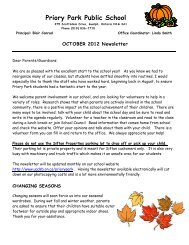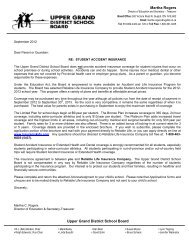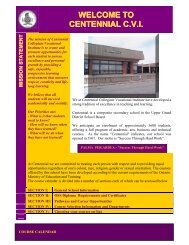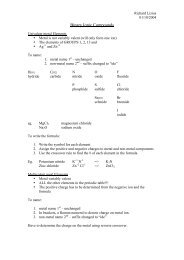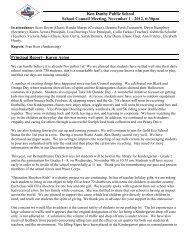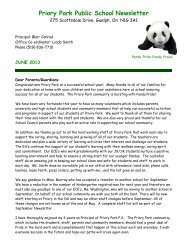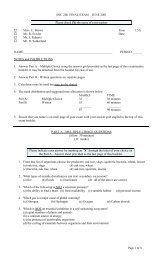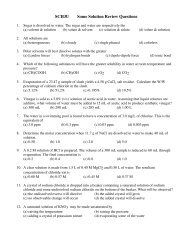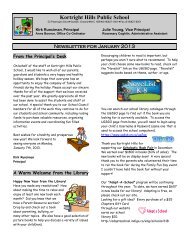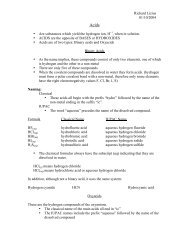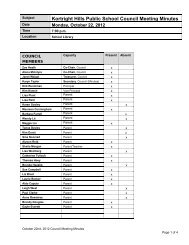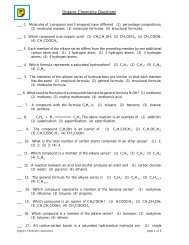Lesson: WAMPUM
Lesson: WAMPUM
Lesson: WAMPUM
You also want an ePaper? Increase the reach of your titles
YUMPU automatically turns print PDFs into web optimized ePapers that Google loves.
Wampum belts were used to record events<br />
and memories. The use of patterns and<br />
symbols were a method of storytelling.<br />
Le s s on : <strong>WAMPUM</strong><br />
UNIT PRE-VISIT SUGGESTIONS<br />
Discuss with students the context for Wampum.<br />
Ask students “Do you have an article of clothing that<br />
commemorates an event or vacation?”<br />
Note: this item may or may not contain the description of time,<br />
date, and place, but still holds the memorial significance. Have<br />
students bring in an object of memorial significance, but not<br />
something of great value, to show how the individual brings<br />
significance to otherwise ordinary objects.<br />
Wampum belts
Keywords & Vocabulary<br />
quahog - a bivalve mollusk, a hard clam, native to<br />
North America’s Atlantic coast that was prized for<br />
the purple interior part of the shell, used to make<br />
purple wampum.<br />
whelk - a marine gastropod (snail-like with a hard<br />
shell) whose shell was used to make the white beads<br />
for wampum.<br />
wampum - purple and white shell beads strung<br />
together in patterns or on a ‘belt’ used to record<br />
events and memories used by American Indians of<br />
the Eastern Woodlands.<br />
Guiding Questions<br />
What meaning did wampum have for<br />
American Indians?<br />
What materials were used?<br />
Grade Ranges<br />
Quahog shells<br />
Differentiated Instruction<br />
As needed for less able, students will be paired to<br />
facilitate activity success. As needed for gifted, provide<br />
additional information and challenges.<br />
K-2 students use a coloring page with pattern<br />
of wampum and tell a story<br />
3-6 students design a wampum belt on graph<br />
paper and use it to tell a story<br />
7-12 students design a wampum belt on graph<br />
paper and use it to tell a story<br />
American Indian Unit:<br />
Wampum<br />
Materials Needed<br />
Fort provided RESOURCE BOX will contain<br />
the following: Period examples and all materials<br />
needed for hands-on activity.<br />
Teacher will provide the following: Tables for work<br />
area.
Literature Relevant to the Art and Historical Period<br />
Wampum Design<br />
Wampum Prayer<br />
In our hand<br />
an old old old thread<br />
Trail of Blood<br />
and Amens<br />
Greed is the gift<br />
for the sons<br />
of the songs<br />
Hear this prayer<br />
of the wampum<br />
This is the tie<br />
that will bind us<br />
—Tori Amos, contemporary songwriter<br />
American Indian Unit:<br />
Wampum
Background<br />
Wampum was a typical item<br />
used or carried by American<br />
Indians. Wampum consisted<br />
of beads of two principal<br />
colors, white and purple,<br />
having a cylindrical form, a<br />
quarter of an inch, more or<br />
less, in length, the diameter<br />
or thickness being usually<br />
about half the length which<br />
were usually strung or woven<br />
into patterns on a belt. The<br />
white beads were made from<br />
Wampum beads channeled whelk shell and the<br />
purple were made from quahog shell. Wampum<br />
belts were used to record events and memories.<br />
The use of patterns and symbols were a method of<br />
storytelling. The color of wampum held meaning,<br />
for example, white beads indicated peace, and<br />
purple or violet meant war. A string of black<br />
wampum sent round the settlement signifies (still<br />
today) the death of a chief to the Iroquois.<br />
The term wampum was apparently applied to<br />
these beads when strung or otherwise connected,<br />
fastened, or woven together. Pontiac’s great<br />
wampum belt was six feet long, four inches wide,<br />
and was designed with the symbols of 47 tribes<br />
and villages that were leagued with him. It is<br />
noteworthy that the usual conception of woven<br />
beads in patterns is not necessarily the norm for<br />
wampum. Sometimes wampum were presented in<br />
long strings connected at one end and left to dangle<br />
free and tied off at the other end.<br />
The early settlers discovered that wampum beads<br />
were a very valuable trade commodity and quickly<br />
learned to mass produce it. There is a common<br />
misconception that wampum was money. Some<br />
Europeans used it as currency but the Natives<br />
never did.<br />
Reproduction “George Washington” wampum belt by Iroquois artist<br />
Ken Maracle<br />
The original of this belt is the sacred agreement<br />
between the Six Nations (Iroquois) and the<br />
original Thirteen Colonies (U.S.). It is the record<br />
of a Treaty with George Washington in 1789.<br />
The house in the center is the longhouse of the<br />
Six Nations. The two figures on each side of the<br />
Longhouse are the Mohawks; the Keepers of<br />
the Eastern Door of the Confederacy and the<br />
Seneca; the Keepers of the Western Door of the<br />
Confederacy. They have joined their hands in<br />
friendship, a covenant with the Thirteen Colonies.<br />
This was made by Iroquois artist, Ken Maracle (see<br />
Artist Profile).<br />
American Indian Unit:<br />
Wampum<br />
Wampum bead weaving
Artist P rofile<br />
Ken Maracle<br />
Haohyohno (Ken Maracle)<br />
Ken Maracle is a faith keeper of the Lower Cayuga Longhouse<br />
and a member of the Cayuga Nation, Iroquois Confederacy, and<br />
Deer Clan who has been making reproduction wampum belts<br />
for more than 20 years. He also makes canes, Condolence Canes,<br />
Horn Rattles, Traditional Headdresses and more. In addition to<br />
being an expert craftsman, Ken speaks the Cayuga language and<br />
is knowledgeable about the history of Wampum and the history<br />
of his people.<br />
To read more about his art visit: http://www.wampumshop.com<br />
Artist weaving “George Washington” wampum belt<br />
American Indian Unit:<br />
Wampum
VISIT<br />
Learning Plan and Notes to Instructor<br />
This lesson will require demonstration and hands-on activity.<br />
Wampum Belt<br />
Methods<br />
Students will study the art of wampum belts, interpret the stories and make their own designs.<br />
K-2 Color a Wampum Belt<br />
Students will color a pre-designed pattern or one of<br />
their own choosing and tell the story.<br />
3-6 Tell a Story with a Wampum Belt<br />
Students will design a wampum belt on graph<br />
paper to commemorate an event using colors<br />
symbolically. Students will tell the story using their<br />
wampum as a visual aid in small groups.<br />
7-12 Tell a Story with a Wampum Belt<br />
Students will design a belt to commemorate an<br />
event or tell a story using colors and images<br />
symbolically. Students will tell the story using their<br />
wampum as a visual aid in small groups.<br />
American Indian Unit:<br />
Wampum
assessment RUBRIC<br />
Name of student _________________________________________________<br />
Title/topic of art lesson____________________________________________<br />
Date _____________________<br />
Analytic Performance Rubric:<br />
Ratings:<br />
1. Takes ownership of the skill or art learned with mastery.<br />
2. Takes ownership of the skill or art learned with proficiency.<br />
3. Takes limited ownership of the skill or art learned.<br />
4. Takes little ownership of the skill or art learned.<br />
5. Takes no ownership of the skill or art learned.<br />
________ A. Knowledge of the art/skill.<br />
________ B. Knowledge of the historical connection.<br />
________ C. Knowledge of the guiding and evaluation questions.<br />
________ D. Skill of the art presented.<br />
________ E. Total points.<br />
Feedback to student:<br />
_____________________________________________________________________________________<br />
_____________________________________________________________________________________<br />
_____________________________________________________________________________________<br />
Constructive direction to student for further learning:<br />
_____________________________________________________________________________________<br />
_____________________________________________________________________________________<br />
_____________________________________________________________________________________<br />
Conversion of analysis to grade: ______________<br />
American Indian Unit:<br />
Wampum
Works Cited & Resources<br />
Mallery, Garrick. Picture Writing of the American Indians. Vol. 1. New York: Dover<br />
Publications, 1972.<br />
“Maracle, Ken” http://www.wampumshop.com<br />
Post-Visit activities<br />
Research American Indian wampum and the historical events they record and try to decode the<br />
symbolism of the wampum in light of the historical account.<br />
Weave a virtual wampum belt online at http://www.nativetech.org/beadwork/wampumgraph/index.<br />
html<br />
Weave a wampum belt using instructions given at http://www.nativetech.org/beadwork/wampumgraph/<br />
index.html<br />
American Indian Unit:<br />
Wampum



